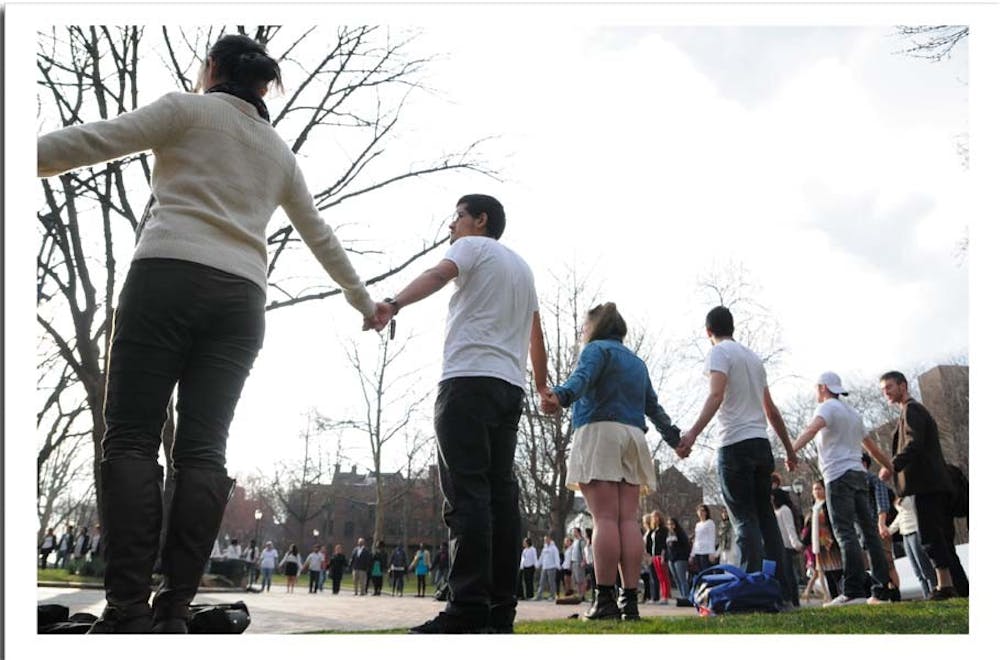
The passion of the Civil Rights Era continues today in student leaders on campus. However, the activism comes in a different format.
The student leaders of various minority groups on campus emphasized that activism for them very much revolves around dialogue within their respective communities and with the University’s administration.
“I think activism, is defined as campaigning to promote social and political change,” College sophomore and Asian Pacific Student Coalition chair Curtis Lee said. “In the context of the Asian-American community it’s very much promoting the awareness of underrepresented Asian groups.”
At one point, activism meant public protests and sit-ins that attracted a lot of attention. The definition now includes sitting down at a table with administrators. In 1999, for example, Asian students gathered on College Green to demand a faculty and resource center. Now, student leaders of the 5B — the five minority coalitions on campus — have sat down with administrators to discuss their concerns over things like the Action Plan for Faculty Diversity and Excellence.
College senior Adrienne Edwards, chair of the Penn Consortium of Undergraduate Women, said that there is definitely value to both approaches.
“Public protests are used as reactionary [responses to issues] but often we continue the dialogue in an activist way,” she said.
Lee recognizes the value in the direct type of activism, and although he agrees that the forms of activism have changed since the 1990s, he said it is still important to create an “activist mindset” among students — so that they will be ready if there is ever a need to protest, seek out administrative help or create a “uniformed front” within a community.
Bob Schoenberg is the director of the LGBT Center at Penn, and in his 30 years at the University has seen firsthand the evolution of the definition of activism.
“Yes, activism has diminished, but a particular kind of activism — direct activism, protests, very agitated campaigns — those things happen much less than they did 20 years ago,” he said.
But Schoenberg notes that there has not been any major shift in activism strategies over the decades. “As is the case in any community, the strategies that are used to try to change social change represent a range,” he said. “[There are] those who believe in more deliberate and slower efforts … and those who believe in more direct action outside of the organization and every strategy in between.”
Lee agreed. “The forms of activism change as different leaders come in and out and as the campus environment changes,” he said, explaining that the focus of a community will depend on whether its leaders are passionate about activism or more concerned with the organization of their communities.
In addition to the change in how activism has manifested itself, the issues have also shifted in focus. Edwards explained that with regard to women’s issues, the conversation has evolved from seemingly basic questions of right and wrong with regard to rape and sexism to more difficult questions of how to define sexism and what constitutes a rape — tapping into discussions of victim blaming and social perceptions.
“We’re talking about much more blurred lines here,” she said.
Other communities are also addressing new questions.
The LGBT community, for example, used to focus on discrimination against gay men, but has since expanded their focus.
Now, however, the community looks at more specific issues such as getting gender-neutral bathrooms to accommodate those who are not comfortable subscribing to a particular gender and allowing transgender students to easily change their name on all official nonlegal documents.
College sophomore Dawn Androphy, chair of the Lambda Alliance, said that the group has recently turned their focus to transgender issues.
Ultimately, no matter what the definition of activism is, the end goal remains the same.
Lee added that “ultimately [APSC’s responsibility is to] make sure that Asian-American students are well represented” with regard to their numbers in admissions and faculty hires.
UMOJA Co-Chair and College sophomore Abrina Hyatt said that the first goal of the umbrella organization she represents is to focus on the needs of its community. “I think we’re very bound by what our mission statement says we do,” Hyatt said. “So our goal is to campaign on behalf of the black community at Penn.”
The Daily Pennsylvanian is an independent, student-run newspaper. Please consider making a donation to support the coverage that shapes the University. Your generosity ensures a future of strong journalism at Penn.
DonatePlease note All comments are eligible for publication in The Daily Pennsylvanian.




